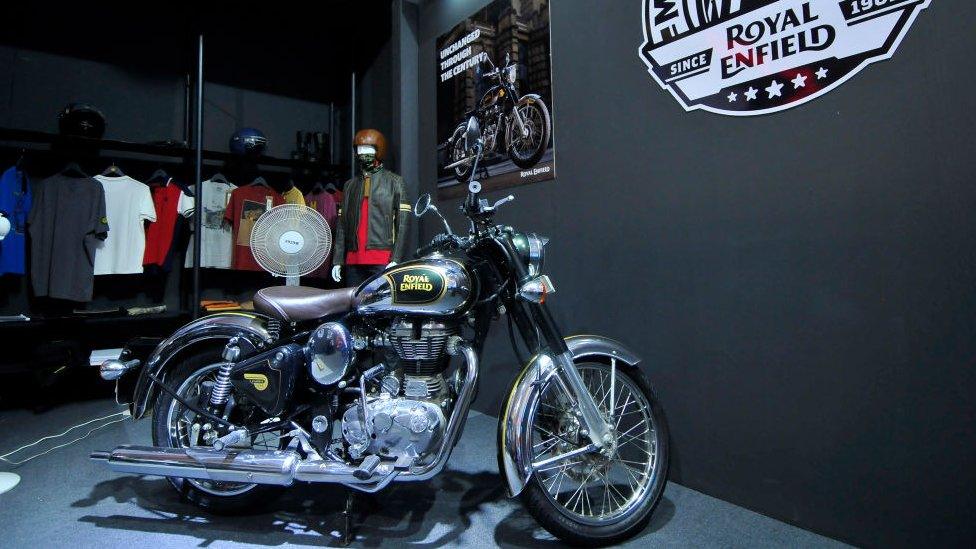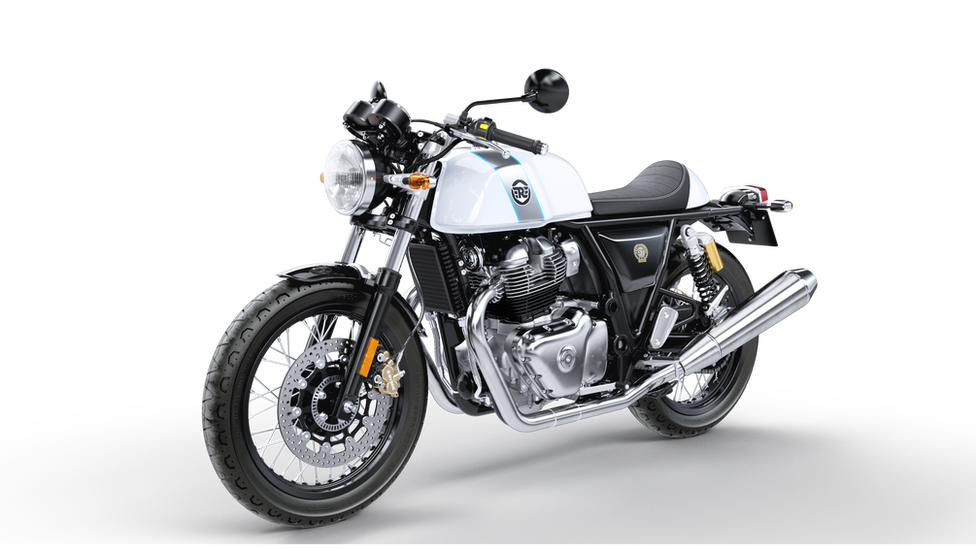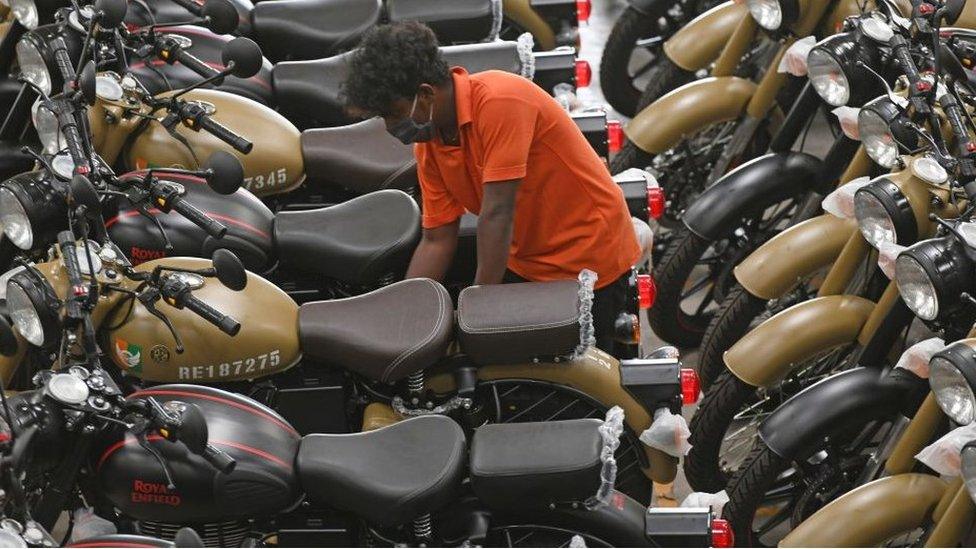British-bred Royal Enfield speeding ahead in Asia
- Published

The company is aiming to boost its share of motorbike sales in Asia
British-bred Royal Enfield is expanding aggressively as it aims to tap into the world's biggest motorbike-buying market, in Asia.
One of the world's oldest bike brands still in operation has been owned by India's Eicher Group since 1994 and has seen strong sales in its local market.
It is now embarking on increasing sales across Asia, and recently announced plans to open a new factory in Thailand.
Asian customers appreciate the style and heritage of its bikes, Royal Enfield chief executive Vinod Dasari tells the BBC.
"We make a significantly better bike for not a significantly higher price," he says.
"Plus we design and produce bikes for the world, not just India".
The new Thailand plant is expected to be in operation within the next 12 months and will be the firm's biggest factory outside of India.

Royal Enfield's Continental GT 650 - Ice Queen
It will serve as a hub to export to other countries in South East Asia including Vietnam, Malaysia and China.
Mr Dasari has ambitious plans, aiming to launch one new bike each quarter for the next three to five years.
"Asia Pacific is a very exciting and important market for us, and our buyers tend to be aspirational, looking for something better."
Winners and losers
Asia has a strong tradition of motorbike riding. India is the world's biggest market for motorbike sales, followed by Thailand, Indonesia and Vietnam.
Motorbikes are the easiest way to navigate the region's often congested roads, particularly in its big cities.
Sales for Royal Enfield, which only makes motorbikes in the mid-segment market (250-750cc class), have grown 88% across the region in the last year.

Royal Enfield is now owned by India's Eicher Group
However, not all motorbike brands have been successful in Asia.
US-based Harley-Davidson recently announced its withdrawal from India, in stark contrast to Royal Enfield's expansion.
"Products of Harley-Davidson were considered oversized for India. The infrastructure, top speeds and traffic discipline is not very suited to cruising at high speeds safely," says Vivek Vaidya, a transport expert at consultants Frost & Sullivan.
"They tried lower engine sizes but that wasn't their forte. Trying to take on Royal Enfield in that segment was not so easy," he adds.
Royal Enfield, in contrast, has products which more readily suit the region's bike buyers, say some.
"People are buying Royal Enfield machines based upon their ease of use, their simple design and their classic vintage styling," says Scott Lukaitis, a motor sports consultant.
"They provide the opportunity for new riders to enter the power sports community at a cost-conscious price point without the need to have a great deal of mechanical ability or knowledge to keep them running."
Ask Mr Dasari and he emphasises Royal Enfield's heritage as an attraction: "We are not just selling a product, we are selling an experience."

Royal Enfield: A timeline

A limited edition Royal Enfield Classic 500 Pegasus motorcycle was built in 2018 to pay tribute to WW2's "Flying Flea"
1893. Originally a bicycle manufacturer, Royal Enfield derives its name from making parts for the Royal Small Arms Factory, Enfield
1901. Produces its first motorised bikes in Britain
1914-18. In World War One, the Redditch-based firm supplies motorbikes to British, Belgian, French, US and Russian armies
1932. Builds the legendary "Bullet" motorcycle, featuring the inclined "sloper" engine
1939-45. Produces military motorbikes as well as bicycles, generators and anti-aircraft guns in World War Two - most famously the "Flying Flea", for use by parachutists and glider troops
1960s. The cultural heyday of classic motorbikes, but many brands struggle including Royal Enfield
1970. Ceases UK operations, its Indian subsidiary takes over production
1994. India's Eicher Motors buys Enfield India, renaming it Royal Enfield Motors Limited
2020. UK is still a key market - its Interceptor 650 is the best-selling middleweight motorcycle


Former US chat show host Jay Leno is a fan of Royal Enfield
Next year marks Royal Enfield's 120th anniversary since it built its first motorbike. Although with India still battling Covid-19 it has not announced any plans yet to celebrate this milestone.
As for the future of the Asian motorbike sector in a post-pandemic world, many see continued growth.
"The general consensus is fear of infection may shift people away from shared transport to individual mobility. Hence, the cheapest mode for rural areas is the motorcycle," says Mr Vaidya.